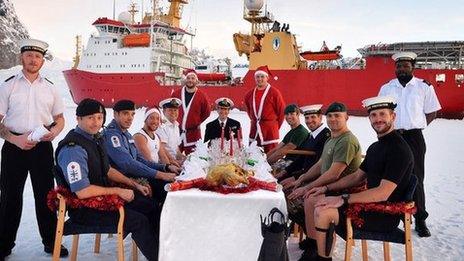Drones help Royal Navy icebreaker in Antarctica
- Published
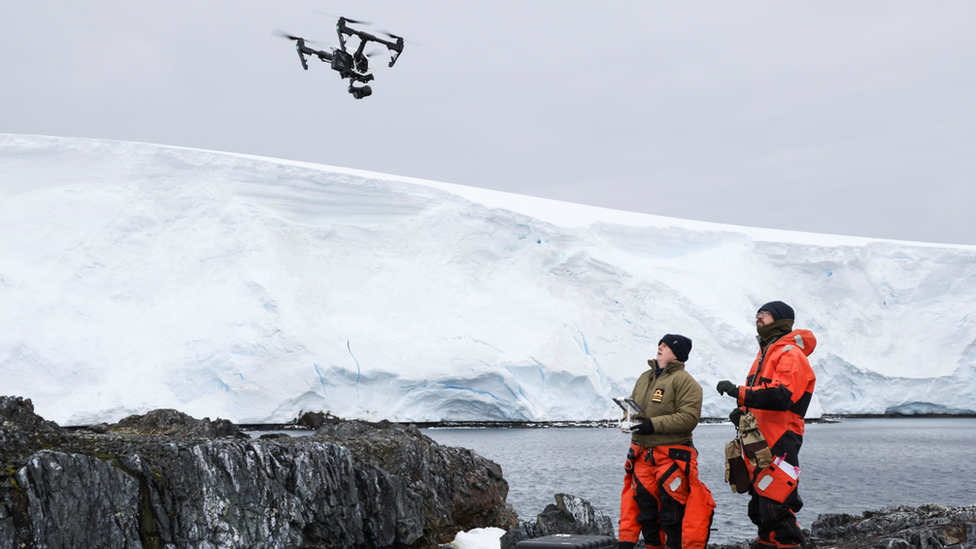
Of the icebreaker's crew, 11 qualified in operating drones from the deck of the ship
Drone experts from Cornwall have been helping the Royal Navy's icebreaker ship get through polar ice.
The team from RNAS Culdrose's 700X Naval Air Squadron were deployed on HMS Protector, which has just completed a stint around Antarctica, to train its crew how to use drones.
Of the icebreaker's crew, 11 qualified in operating drones from the deck of the ship.
The use of drones was said to allow the crew to safely assess ice conditions.
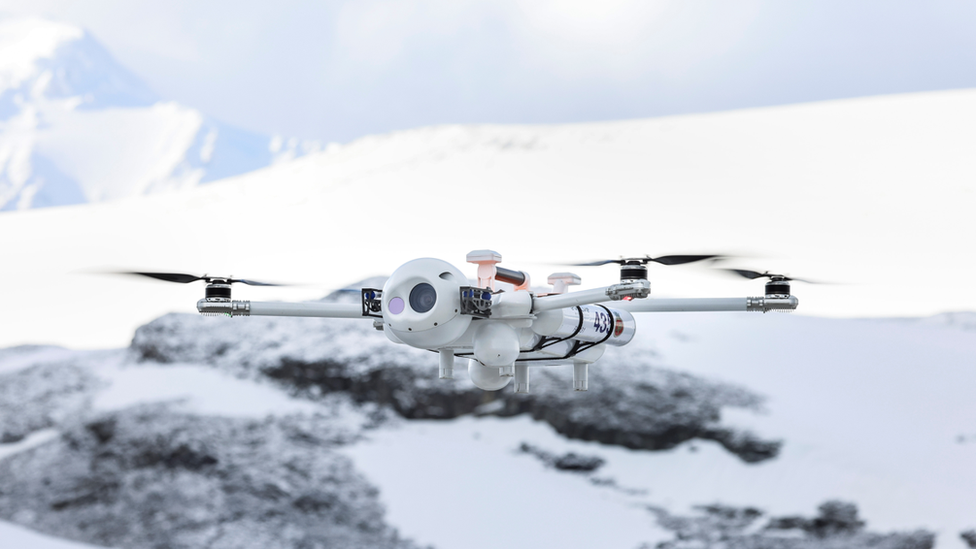
One of the drones sailors were learning to fly in Antarctica
Lt Kate Retallick said: "They can be used to identify areas of ice concentration and 'leads' - gaps - in the ice which help the ship to navigate through complex ice-infested waters."
Cornwall-based PO John Simpole and marine Tom Salt spent six weeks on board the vessel training crew to use the drones.
Plymouth-based HMS Protector's tasks include updating the seafaring charts of Antarctic waters, delivering supplies and personnel to remote research stations while monitoring wildlife and the environment.

HMS Protector has just finished a stint in Antarctica
Personnel regularly train at RNAS Culdrose's centre of expertise at Predannack Airfield on the Lizard Peninsula.

Follow BBC News South West on Twitter, external, Facebook, external and Instagram, external. Send your story ideas to spotlight@bbc.co.uk, external.
- Published24 March 2022
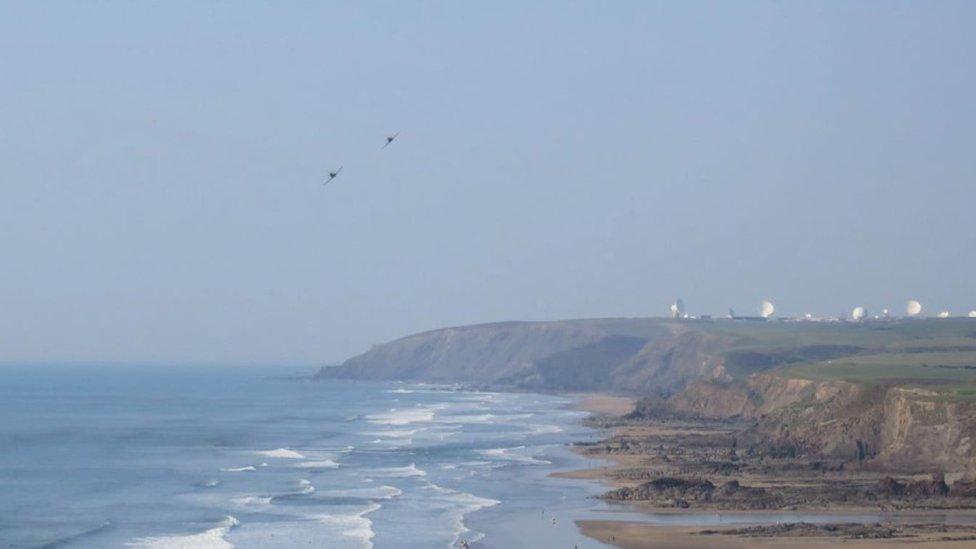
- Published14 December 2021

- Published28 October 2021
- Published24 September 2021
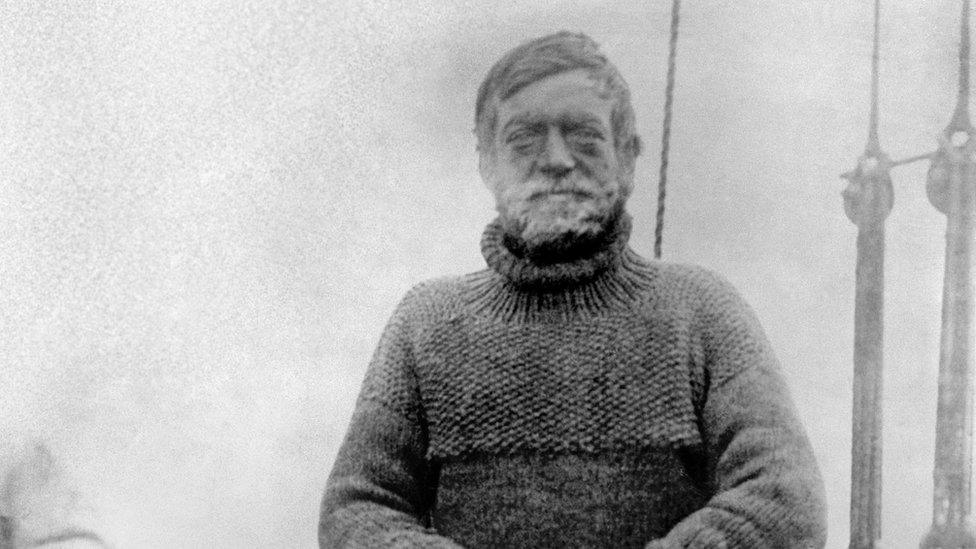
- Published22 December 2013
